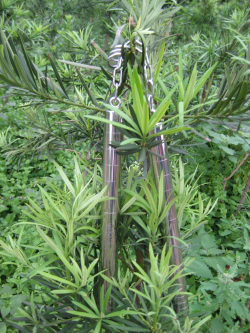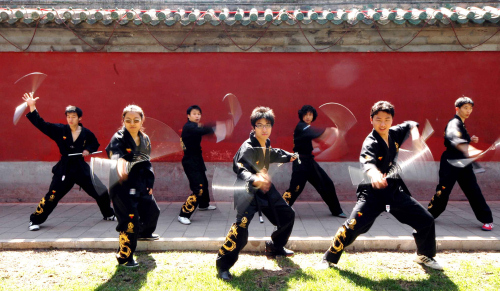 Traditional Chinese Nunchakus are used to be made of wood and linked by a rope, but they’ve also been caught up by metal chucks linked by a chain which turned out to have better abilities. Nowadays, it is really hard to found such wooden Nunchakus.
Chinese Nunchakus have specifics features in comparison with common Nunchaku well known in the other part of the world:
Traditional Chinese Nunchakus are used to be made of wood and linked by a rope, but they’ve also been caught up by metal chucks linked by a chain which turned out to have better abilities. Nowadays, it is really hard to found such wooden Nunchakus.
Chinese Nunchakus have specifics features in comparison with common Nunchaku well known in the other part of the world:

 Chinese way of fighting is clearly specific and it is in a real opposition of the Japanese one: whereas Japanese people strictly perform moves to attack and get back in guard position, making a jerky but efficient way of handling Nunchaku, Chinese people perform moves more flowing with much more bends before the attack. It shows well each country state of mind: Japanese people as a whole are straight and serious while Chinese people as a whole are kind of what are attractive and flowing.
Chinese way of fighting use basic Nunchaku moves but more abilities from this weapon are highlighted: indeed, performing one or two spin(s) before an attack is really attractive but it also make the opponent absent minded and unable to know when and from where the attack will come up. It also allow to gather more speed and, finally, to hit really harder.
Chinese people are used to integrate their own body abilities into their Nunchaku handling: body spins, jumps, kicks, flips and other martial arts stunts, etc.
Chinese way of fighting is clearly specific and it is in a real opposition of the Japanese one: whereas Japanese people strictly perform moves to attack and get back in guard position, making a jerky but efficient way of handling Nunchaku, Chinese people perform moves more flowing with much more bends before the attack. It shows well each country state of mind: Japanese people as a whole are straight and serious while Chinese people as a whole are kind of what are attractive and flowing.
Chinese way of fighting use basic Nunchaku moves but more abilities from this weapon are highlighted: indeed, performing one or two spin(s) before an attack is really attractive but it also make the opponent absent minded and unable to know when and from where the attack will come up. It also allow to gather more speed and, finally, to hit really harder.
Chinese people are used to integrate their own body abilities into their Nunchaku handling: body spins, jumps, kicks, flips and other martial arts stunts, etc.

